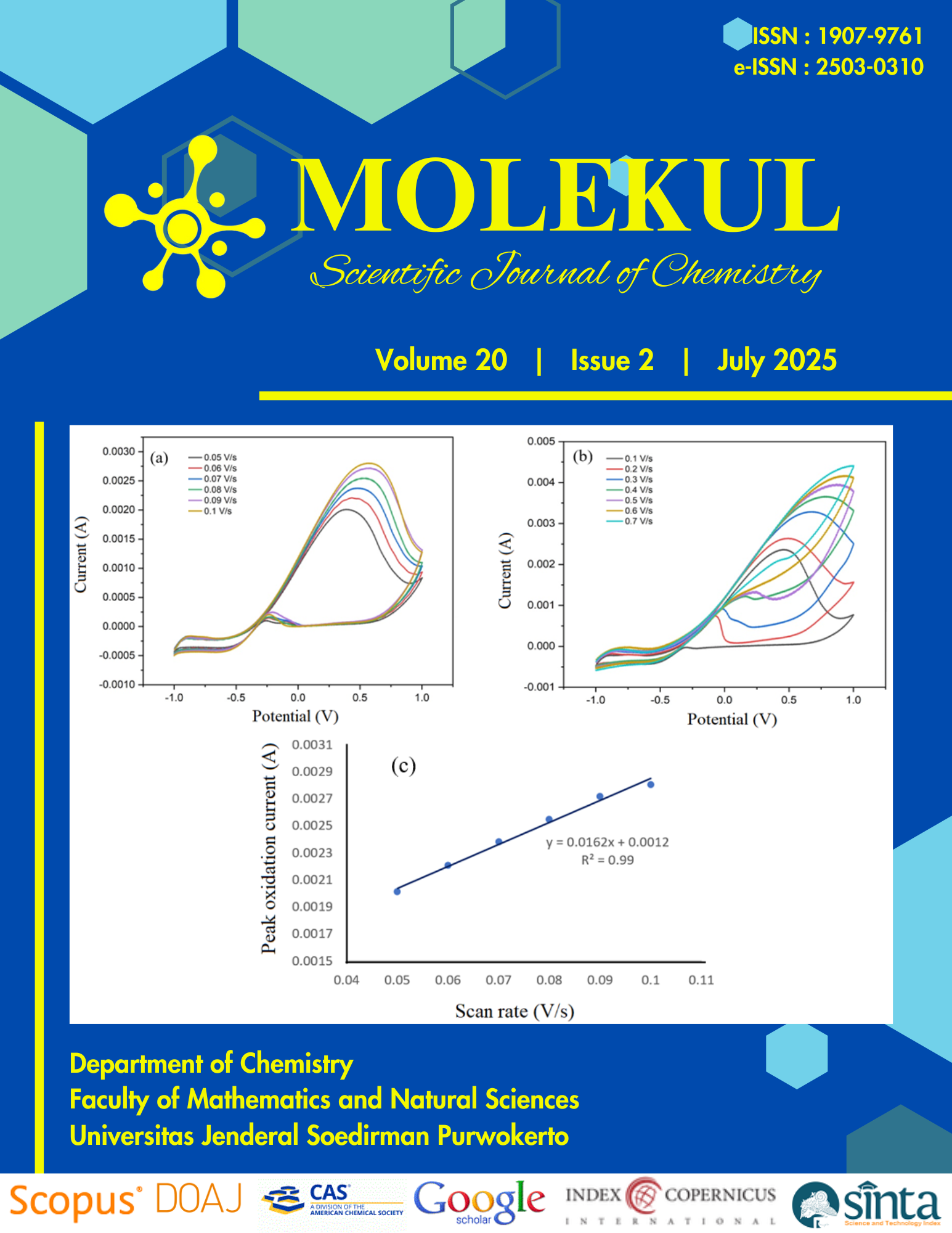The In Silico Study of Bioactive Compounds from Some Tropical Trees as Inhibitors of Papain-Like Protease SARS-COV-2
Abstract
ABSTRACT. Severe Acute Respiratory Syndrome Coronavirus-2 (SARS-CoV-2) is the causal virus of the global COVID-19 pandemic. Furthermore, it is known to encode 4 structural and 16 non-structural proteins, one of which is Papain-Like protease (PLpro). This protein is an essential enzyme that plays a role in the maturation of viral polyproteins, the formation of replicate-transcriptase, and the signaling of the host's innate immune response to viral infections. To prevent the activities of PLpro, several compounds with inhibitory effects have been developed from natural sources. Flavonoid compounds from bay leaf (Syzygium polyanthum) and mahogany bark (Swietenia macrophylla), as well as phenolics from white teak bark (Gmelina arborea Roxb.), have been reported to have antiviral activities, but there are no studies on their potential as PLpro SARS-CoV-2 inhibitors. Therefore, this study aimed to investigate the PLpro SARS-CoV-2 inhibitory effects of 11 bay leaf, 3 mahogany bark, and 6 white teak bark test ligands within silico method using YASARA and PLANTS. The best test ligands obtained were epigallocatechin-3-gallate (-98.93 kcal/mol), catechin (-80.10 kcal/mol), epicatechin (-80.12 kcal/mol), and balanophonin (-83.36 kcal/mol) based on energy binding values surpassing the reference ligands ribavirin (-74.06 kcal/mol) and benserazide (-90.93 kcal/mol). Additionally, these four ligands satisfied physicochemical, pharmacokinetic, and toxicity predictions, in contrast to the natural ligand VIR251, which carries the risk of inhibiting hERG, potentially resulting in fatal outcomes. Based on the results, the compounds could be developed as effective alternative drugs in inhibiting PLpro SARS CoV-2.
Keywords: Covid 19, molecular docking, Papain-Like protease, SARS CoV-
Authors agree with the statements below:
- Authors automatically transfer the copyright to the MOLEKUL journal and grant the journal right of first publication with the work simultaneously licensed under a Creative Commons Attribution 4.0 International License (CC BY 4.0).
- Authors are able to enter into separate permission for the non-exclusive distribution of the journal's published version of the work (e.g., post it to an institutional repository or publish it in a book), with an acknowledgment of its initial publication in this journal.













